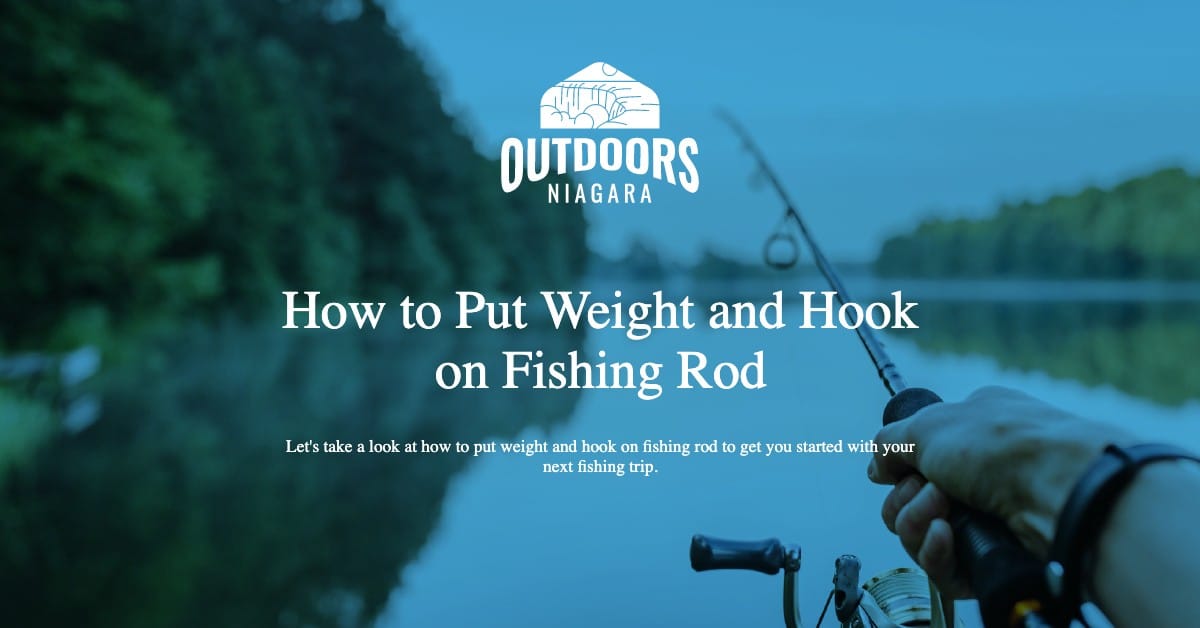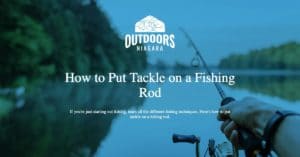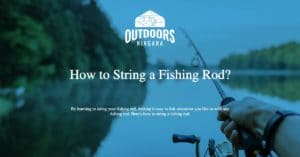Knowing how to prepare your fishing pole will take you a long way to be successful in catching your fish for the day. To do that, you need to know several things, such as the right fishing knot.
This article will talk about the right fishing reel and how to set up your fishing rigs for the best results. We will also talk about improving your fishing technique so you can have a much better experience on fishing trips.
No matter what your style of fishing is, everyone can do with some advice to improve, and that is our goal. So let’s take a look at how to put weight and hook on fishing rod to get you started with your fishing trip.
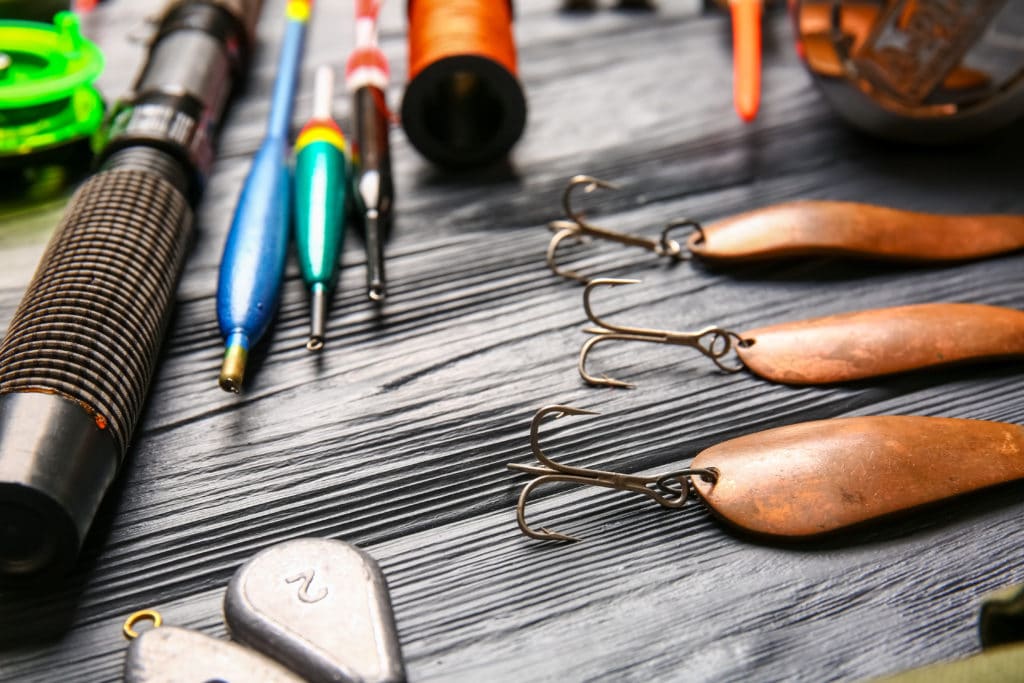
Contents
How To Set Up The Weight And Sinker
There is one question many newbies ask: whether you should set your reel up the same for every type of fishing? The answer is no, there are different types of setup, such as a fly fishing rod setup, but the basics are the same.
So let’s follow the steps to set up the fishing rod, so the newbies know how to get going without hassles.
Basic Setup Of a Fishing Rod
First, you need to know what you need to set your fishing rig up to be ready for happy fishing.
What You Will Need
Get this list of items ready before you start so it can be close at hand and not waste your time. These can be bought for a few dollars at any tackle shop near you or ordered from an online fishing supplies retailer.
Fishing rod: Any type of fishing rod will do. For beginners, it is best to start with a small 6 1/2 to 11 pounders. It doesn’t matter if it is a one-piece, two-piece, or four-piece rod.
Fishing reel: Wind the line onto this part of the fishing rig to make it easy to throw a length of the line. This gear will also help to reel the fish in so you can catch one effortlessly. You do not need a large reel, just one that will hold about 500 feet of line (just over 150 meters).
Fishing line: The correct size for this small rod is a 9 to 10-pound line so that the line will break before the rod. The rod may break if you have a too heavy line, which is not very cost-effective for beginner fishermen.
The fishing hook: This critical piece is necessary to hook the fish in its mouth, so it doesn’t get away with your bait. It is good to buy a variety of hooks instead of just one. A kit comes with different types and sizes of hooks.
Fishing weights: In the case of weights, you need to have a wide variety of sizes, so it is best to invest in a set. Many different weights make the fishing job more manageable, such as a bullet sinker or egg sinker. A split shot sinker or 1-2 split shot sinkers makes it easy to attach or remove the weight from the line.
Swivel: The swivel is necessary for fishing rigs because it prevents bobbers and sinkers from moving past a certain point. There are many different swivels, such as barrel swivels, snap swivels, and three-way swivels, and they are used for different setups. In the basic rod setup, we use the regular swivel. Swivels are also available in small and large sets or kits.
Scissors or small knife: This is to cut the line and do other types of cutting needed around the fishing waters.
Pair of pliers: This is an essential tool in any quality tackle box. You can have a combination and a long nose plier. A plier is handy for many things and especially for unhooking the hook from the fish’s mouth with a quick movement.
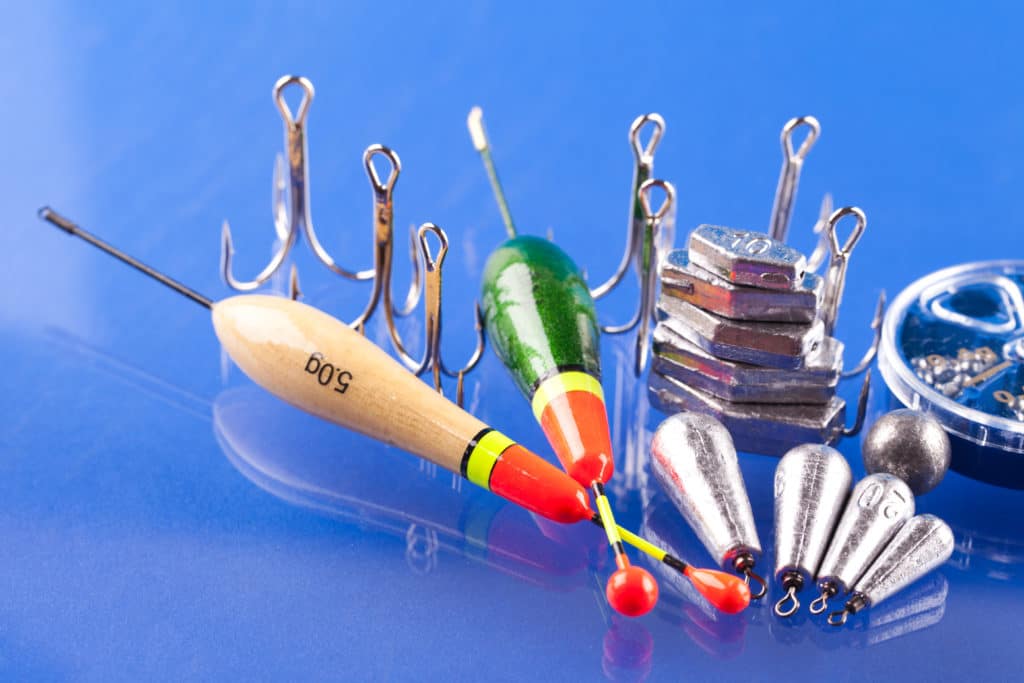
Steps Of Setting Up the Hook And Sinker
Follow the steps and you will be able to catch your first fish in a few minutes to kick off your fishing career.
- If you have a two-piece or a three to four-piece fishing pole, put the pieces together so they fit snugly.
- Make sure all the guides are lined up on one side of the rod.
- Attach the reel at the back end in the designated space for it and tighten it.
- Take the roll of the fishing line and, grab the end of the line, then start feeding it through the guide holes.
- Work down to the reel.
- Make sure that you feed the line through every guide and do not skip any hole.
- When you get to the reel, flip the locking mechanism to the open position, so it is out of the way.
- Take the end of the line and tie it to the part of the reel where you will roll it onto.
- This is done by folding the line around the cylinder part of the reel and tying it with a double knot.
- Pull it tight and cut off the excess piece of line with scissors or a small knife to make it nice and tight.
- When done, flick the locking mechanism back to its original position.
- Now you can start winding the line onto the reel with a simple backward movement of the grip.
- If you have a 500-foot reel, just wind that much line onto it.
- When you are done winding it up, you can cut off the line from the roll so you have about a foot of line.
- Now stick the end of the line through the hole in the sinker and pull it up to the tip of the rod.
- Attach a swivel to the end of the line with a standard fishing knot.
- Cut about a one or two-foot piece of fishing line from the roll so you can make a leader line.
- Attach the leader line to the other end of the swivel.
- Now you can attach the hook to the end of the leader line.
- The last step is to attach the bait by hooking the hook two or three times through the bait.
- Please make sure the bait conceals the hook and hides it from the fish.
Making the Fishing Knot
Making the knot needs its own set of instructions, so the fish does not swim off with your hook.
- To tie the knot, just stick the line through one end of the swivel or hook and fold it back.
- Now twist it loosely five to 10 times while holding the end and the rest of the line together.
- The next step is to stick the end of the line through the eye or hole of the twist.
- Now pull the knot tight. You can wet it a bit with saliva so it will slide easily.
- Pull the knot tight so it does not come loose.
To see the complete instructions on setting it up, look at this video for more information.
Other Important Information
It would be best if you kept in mind that different types of fish need different approaches to catching them. Fly fishing, for example, needs some extra care and preparation. This will give you a much better perspective of fly fishing.
Small fish need small to medium rods, but if you are interested in catching large fish, a larger rod is needed. You will also need a different rod for lake fishing than catching fish in the ocean.
The size of the line you use is essential and you can not use any type of line with all fishing rods. Several fishing line types include weight types, from 100-pound fishing lines to much heavier ones.
Different types of lines are used for different types of fishing and to catch a broader range of fish types. Braided lines are used for lure fishing and monofilament fishing lines, or single lines, come in different colors and strengths.
Copolymer lines are another fishing line made up of two different nylon strings and are used for different setups. All these different fishing lines have their own set of benefits and reasons for using them.
As you gain experience, you will find that different knots are needed to tie the fishing rig parts together. These knots are used in various applications and fishing rig configurations to improve your fishing experience.
With these knots, you can add different types of fishing lines together or attach one piece of fishing gear to another. You can find the different types of knots and where to use them on this website to increase your general knowledge.
The clinch fishing knot and the improved version are the most common knot used among anglers worldwide.
Summary
With this knowledge at your disposal, you can now catch your daily fish without problems. Give a man a fish and he will eat for a day, but teach him to fish and he will eat every day.
You can now eat fresh fish every day of your life if you wish to do so. Happy Fishing!

